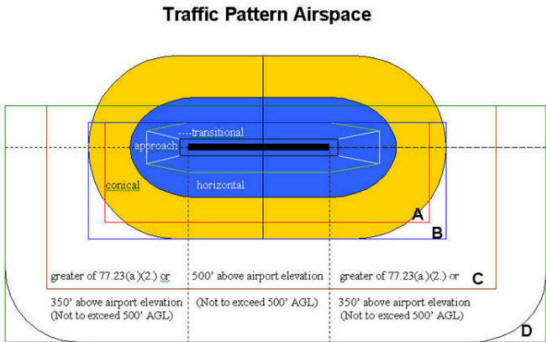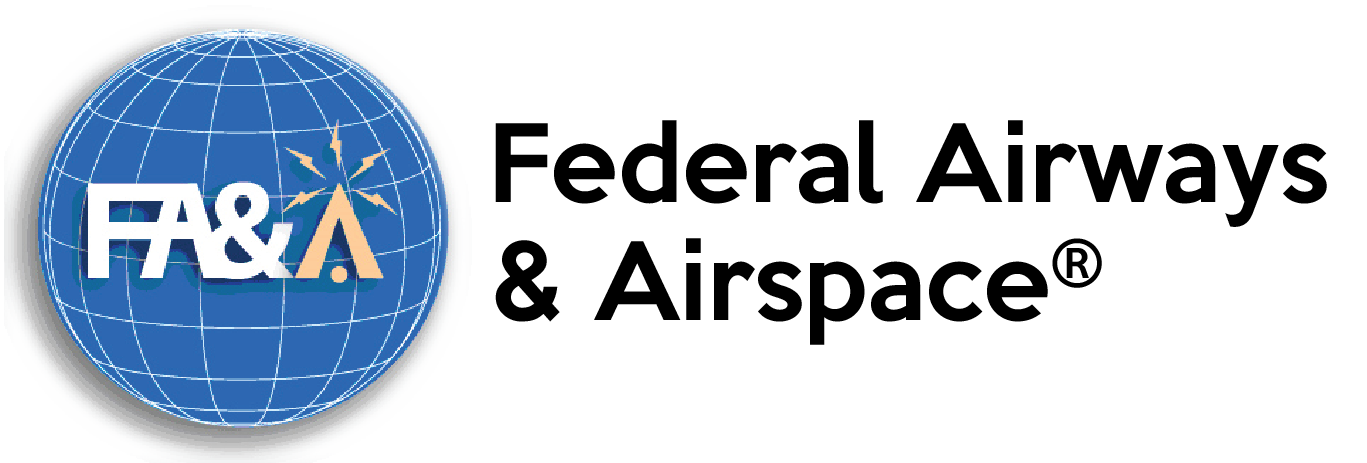Traffic Pattern Airspace Proposal, Version 7
FAA Order 7400.2 (additional amendment)
(To Be Incorporated Into FAA Order 7400.2, Procedures for Handling Airspace Matters)
Change to Proposed 6-3-8d.1.
Traffic Pattern Airspace: There are many variables that influence the establishment of airport arrival and departure traffic flows. Structures in the traffic pattern airspace may adversely affect air navigation by being a physical obstruction to air navigation or by distracting a pilot’s attention during a critical phase of flight. The categories of aircraft using the airport determine airport traffic pattern airspace dimensions. (See paragraph 12-1-4).
Traffic Pattern Airspace dimensions:

How the distances are determined
| Aircraft Category | DIstance (nautical miles) | |||
|---|---|---|---|---|
| a | b | c | d* | |
| A | 1.25 | .25 | 1.25 | .375 |
| B | 1.5 | .25 | 1.5 | .5 |
| C | 2.25 | .5 | 2.25 | .875 |
| D | 4.0 | .5 | 3.0 | 1.0 |
* Increase distance “c” by adding distance specified in “d” for each aircraft over four (of the same category) anticipated to be operating in the traffic pattern at the same time.
(b) Within Traffic Pattern Airspace, a structure that exceeds any of the following maximum allowable heights is considered to constitute a hazard to air navigation except as noted in 6-3-8d.1.(c) & (d):
(1) The height of the transition surface (other than abeam the runway), the approach slope, the horizontal surface, and the conical surface (as applied to visual approach runways, 14 CFR §77.25).
(2) Beyond the lateral limits of the conical surface and in the climb/descent area- 350’ above airport elevation or the height of part 77.23.a.(2), whichever is greater not to exceed 500’ above ground level (AGL). The climb/descent area begins abeam the runway threshold being used and is the area where the pilot is either descending to land on the runway or climbing to pattern altitude after departure. (the area extending outward from a line perpendicular to the runway at the threshold, see figure 6-xxx)
(3) Beyond the lateral limits of the conical surface and NOT in the climb/descent area of any runway – 500’ above AE not to exceed 500’ AGL.
Center Runway Area

Climb/Descent Area

Exceptions
(c) An existing structure (that has been previously studied by the FAA), terrain, or a proposed structure (that would be shielded by existing structures of a permanent nature with no plans for removal or reducing the height of the existing structure) may not be considered to be a hazard to air navigation. In such instances, the traffic pattern may be adjusted on a case-by-case basis.
(d) Exceptions may be made on a case-by-case basis when the surrounding terrain is significantly higher than the airport elevation or “density altitude” is a consideration.
How to Analyze a Visual Flight Rules (VFR) Airport for Traffic Pattern Airspace
